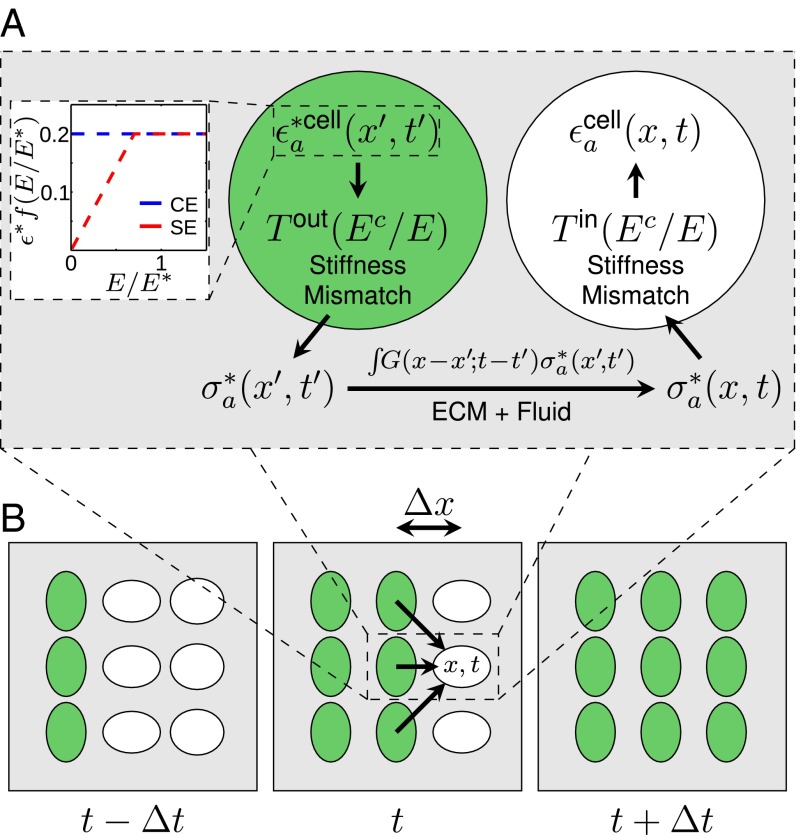Fig. 1.
Model for stress propagation in the myocardium. (A, Inset) CE and SE models as a function of ECM Young’s modulus, which determines the strength of contraction (Eq. 1). (Main) The contracting CM (green) acts as a stress source for a quiescent CM (white). An activated cell a contracts with an eigenstrain , locally inducing a stress in the ECM that depends on the relative stiffness between the ECM and CMs. We capture these physics via the tensor in accordance with the Eshelby theory of elastic inclusions (Supporting Information). This stress propagates according to the ECM response function (Supporting Information). The matrix stress at due to cell a is . This creates , the strain induced in the quiescent CM due to the contraction of a (modified by ). (B) Sketch depicting quiescent (white) and activated (green) CMs in a traveling mechanical wave front at subsequent activation times separated by . Arrows represent stresses propagated through the ECM (not all shown) to a quiescent CM, which activates when .

